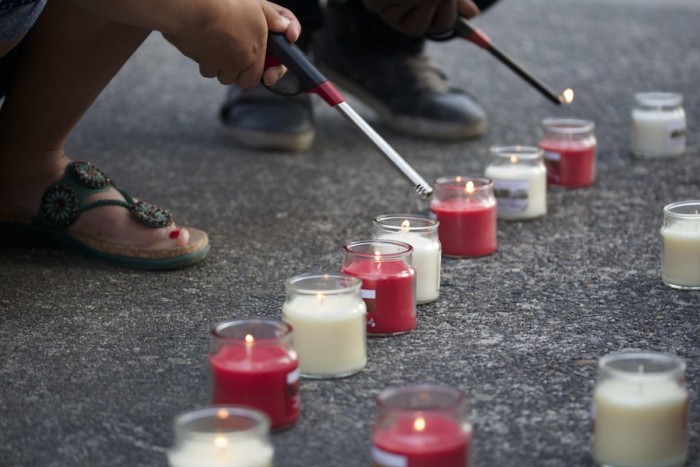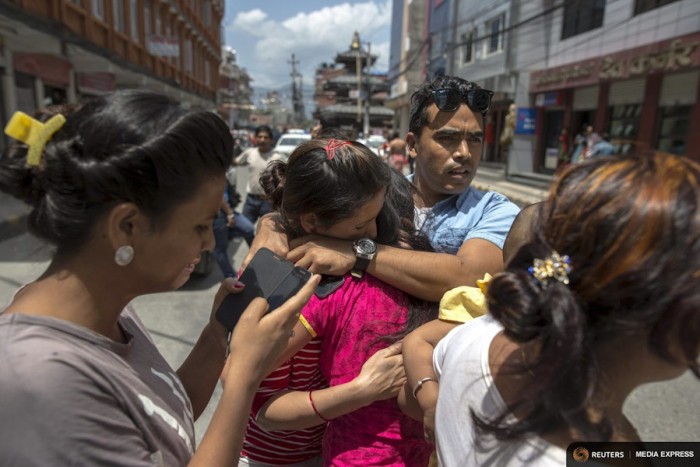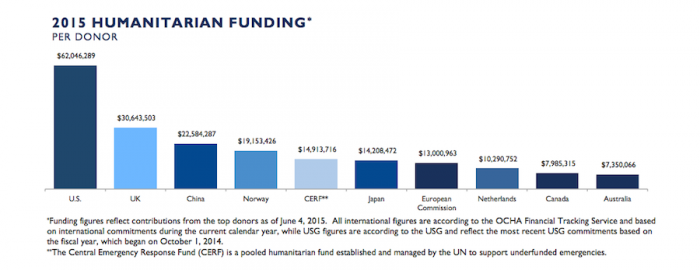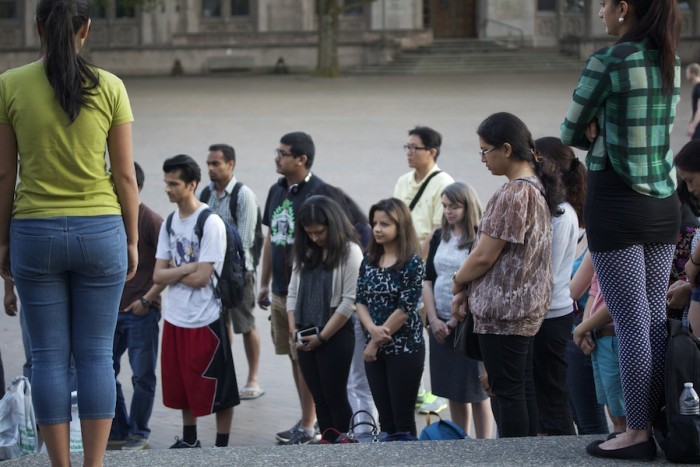
People around the globe have been asking themselves how to best help Nepal, and even more so, where to direct their donation dollars for the largest benefit.
As it turns out, large aid commitment claims are suddenly facing due scrutiny. NPR and ProPublica released an investigation June 3rd that found the the American Red Cross has only built six permanent homes in Haiti — despite its claim to providing 130,000 people with homes, and having $500 million in donations to work with.
Like Haiti, Nepal has been flooded with humanitarian aid attention from governments and organizations since April, when the 7.8 magnitude earthquake flattened buildings, caused avalanches, and killed almost 8,700 people.
But as NPR and ProPublica’s investigation suggests, there are some ugly truths behind the big dollar amounts we hear are going toward aid in the wake of a disaster. How the money is allocated isn’t always transparent, it can be frittered away through corruption, and it can take months for the aid to actually get to its destination, should it arrive at all.
So are we better off giving to smaller organizations?
Seattle resident Nihit Pokhrel thinks so. She was born and raised in Nepal until she was 17 years old. She recalls the moment she found out the huge earthquake had struck, just 46 miles from her home town of Pokhara.
“It was a Friday. My mom doesn’t call me on Fridays.”
Pokhrel’s siblings and some of her cousins are here in the U.S., but her parents were in Nepal when the earthquake hit. And they’re still there as it’s been riddled with aftershocks practically every day since the first quake hit, leaving people terrified to eat, sleep, or stay inside.

Pokhrel remembers another tearful phone call from a high-school-age cousin living in Nepal a few weeks ago. She says she tried to reassure the girl, saying, “oh, it’s going to be fine.” Her cousin’s response: “No, it’s not. I’m scared I’ll have to run again.”
Even before the aftershocks, aid for Nepal was quickly announced by governments, organizations, and individuals worldwide.
Pokhrel is a secretary for a small group at the University of Washington called the Nepalese Student Association (NSA) that is raising money to rebuild Nepal and to help its people.
“We wanted to do immediate relief stuff,” said Pokhrel of the NSA. “So we just wanted to do what we like or what we thought would be more effective.”
So far they have raised approximately $20,000 — a minuscule sum compared to the donations collected by the International Federation of Red Cross and Red Crescent Societies (IFRC). IFRC is a global federation of all of the Red Cross and Red Crescent Societies in 189 different countries, including the American Red Cross. It is currently the largest outside contributor to the earthquake relief effort, committing 85 million Swiss Francs (or 93 million USD).

The U.S. government’s humanitarian funding is the second largest contribution. Our donation to Nepal earthquake relief is approximately $62 million, according to the June 4th USAID fact sheet.
These huge numbers might make the NSA’s $20K, or even the Nepalese Seattle Society’s contribution of $120,093, seem insignificant.
But Pokhrel says these intimidating monetary claims made by governments and large organizations are not as helpful as they may seem.
She sees large organizations and governments as limited in their efficiency. They have to jump through more official hoops, rather than going directly to those in need the way smaller groups like the Nepalese Student Association can.
Al Jazeera’s Thomas Bell seems to agree, saying that “giving reconstruction funds directly to survivors could cut out a great deal of corruption and administrative waste.”
The NSA has already provided tents, money to rebuild a high school, as well as food, water and hand sanitizer to areas most effected by the earthquake.

In a 2012 paper published by the Inter-American Development Bank, Oscar Becerra, Eduardo Cavallo, and Ilan Noy analyze Official Development Assistance (ODA), focusing on aid given after large natural disasters occurring between 1970 and 2008.
“While the median increase in ODA is 18 percent compared to pre-disaster flows, the typical surge is small in relation to the size of the affected economies,” their paper says.
They mean that most countries already receive humanitarian aid for things like local NGOs, healthcare and food — these are the “pre-disaster” monetary flows the paper mentions. It’s important to compare the disaster relief numbers to what was already being given. This way, there’s accurate representation of what aid was sent specifically in light of, and presumably for, a natural disaster.
Moreover, some parts of what is declared foreign aid isn’t exactly used to assist those in need the way most people think of it.
For example, despite IFRC’s commitment of $93 million, the humanitarian organization has currently raised just $38.2 million — about 41 percent — according to an email from Patrick Fuller, IFRC’s Asia Pacific communications manager.
“Commitments are frequently unfulfilled, and in some cases when they are fulfilled, it can just be reclassified aid,” Ilan Noy said in an email. “The most depressing example is probably Haiti after the 2010 catastrophic earthquake.”
Noy is the Chair of the Economics of Disasters, and Professor of Economics at Victoria University of Wellington, New Zealand.
He estimated that about 60-70 percent of committed aid ends up being actually provided. Even from that, a lot of it isn’t given to the receiving government, but to NGOs in the donor countries.
Basically, a lot goes to salaries for the expatriate staff.
“…aid pledges are distinct from amounts actually disbursed, and much of what is disbursed is re-labeled aid.”
So there is plenty of reason to be skeptical about the very large numbers publicized by governments and organizations.
Even the OECD, which keeps track of aid commitments between countries doesn’t articulate which aid is given after natural disasters, leaving researchers struggling for more specific information.
Noy, Becerra, and Cavallo’s newest 2014 paper on disaster aid donors expresses these concerns:
“As far as we could find, no one has ever looked at these issues systematically, in spite of their obvious importance… post-disaster aid that is typically forthcoming after catastrophic disasters is difficult given the possibilities that aid pledges are distinct from amounts actually disbursed, and much of what is disbursed is re-labeled aid.”
While the numbers thrown out in press conferences and reports about humanitarian aid to Nepal seem impressive and generous, they need context.
Comparing those numbers to what was already being given to a country, attempting to find out what goes to where, and realizing how long it actually takes to meet these very large commitments — if they’re met at all — is a reality check individual donors needs to face when deciding how to support disaster relief.
Dollar for dollar, it may make more sense to send your money through smaller organizations that can have more immediate, specific, and transparent impact.


Great article Kelsey! So informative and so true. You have left no questions unanswered. Outstanding job being done by the NSA. Thumbs up guys!
Yes, Youth can do ! This disaster have really shown the world that the youth are capable and effortful enough to be a support and backbone in all the ways. Nice work NSA.
Very true, Kelsey. This is an issue many people probably wonder about, but not much is said about it. You’ve done a great job bringing it to the fore. And good work, NSA!
In our university, University of Dhaka Bangladesh, NSA has been working. I also participated in their fund raising. Huge amount of money we collected too. As far I know they also contributed to the affected areas directly. Though their physical amount was not more than that of others, they could make that affected people more benefited.
Agreed,
Big INGO, NGOs and GOs in Nepal are not using aids with satisfactory. (and yes, i cann’t claim all the small agencies are fare). Maximum portion of aids and raised funds are being used for administrative cost. Because of this supports are not actually reached to ground level.
Nepal Government’s Disaster Risk Reduction Portal (http://drrportal.gov.np/ndrrip/main.html?id=1) also shows impressive number of distributed relief but talking to any local survivor can bring all the truth in front of us.
So, all agencies working for crisis management in Nepal are needed to be accountable and transparent with complete data transparency. Now days, agencies are claiming about aids and relief distribution but not enough transparent with ground level location details, where they have distributed it.
Well written article! Shows how working at grass root level during the time of disaster management is helpful than making it sophisticated.